The general rule is that water with turbidity less than 30 Nephelometric Turbidity Units (NTU) can be treated with water filtration units. Water with turbidity above 30 NTU can cause filters to clog and impact the whole filtration process.
The following are common methods used to reduce/remove turbidity from well water.
- Microfiltration
- Chlorination (if turbidity is caused by microorganisms)
- Reverse Osmosis
- Aeration
- Ozone Treatment
- Distillation
Microfiltration, chlorination, and reverse osmosis are the most common methods. Let’s learn how they remove turbidity from water.
Microfiltration
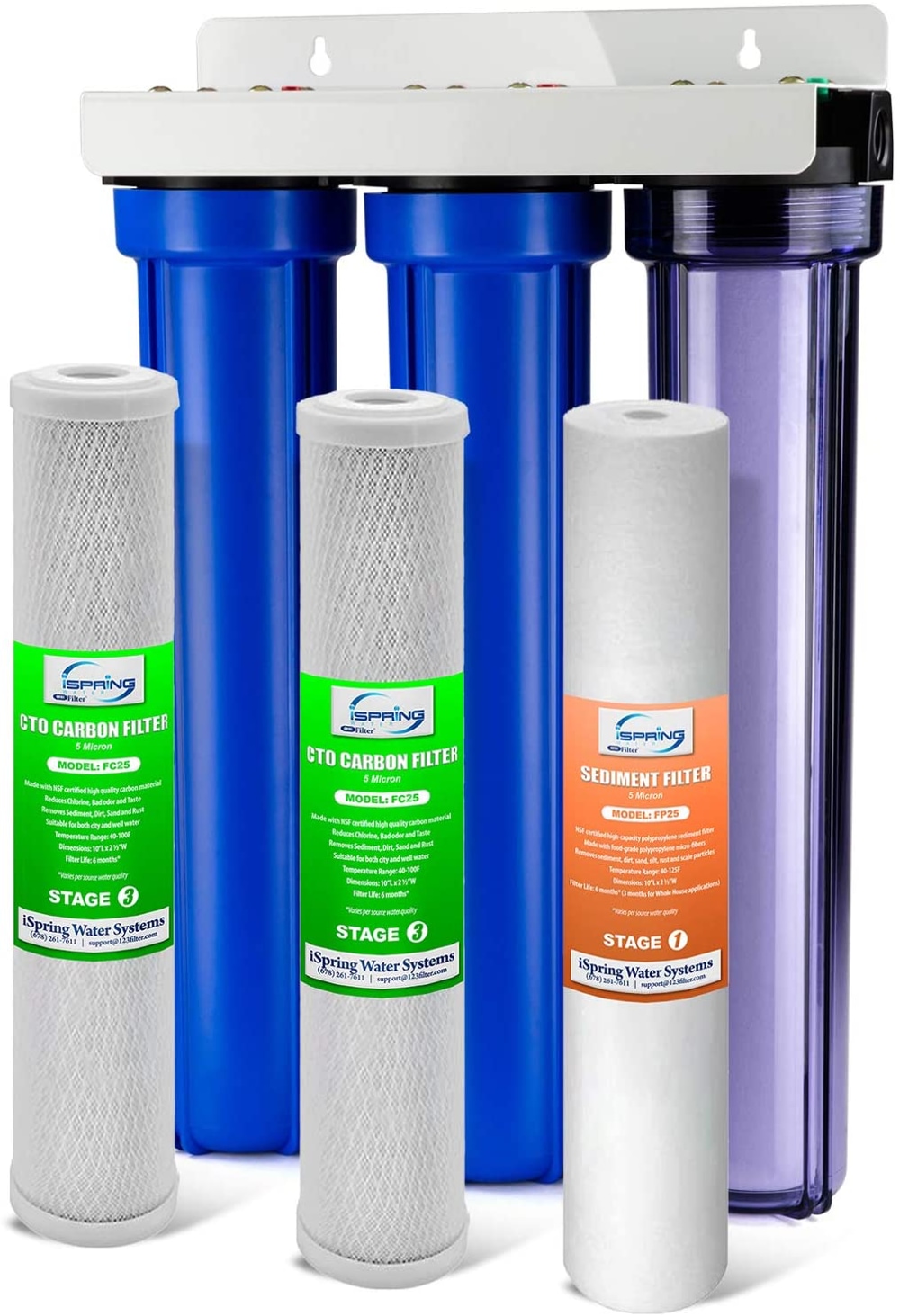
Microfiltration or water filtration removes suspended particles and other contaminants in water. These filters come in various shapes and sizes, ranging from whole house to point-of-use models.
They use filtration media that needs to be replaced periodically. The filtration capacity varies from one filter to another.
Water filters are best for dealing with turbidity caused by suspended particles and contaminants like sand, dust, and dirt. The filter can also remove other contaminants from your well water depending on its type and the number of cartridges.
Recommended Suspended Water Filter for Sediment Removal: SpringWell’s Spin-Down Sediment Filter
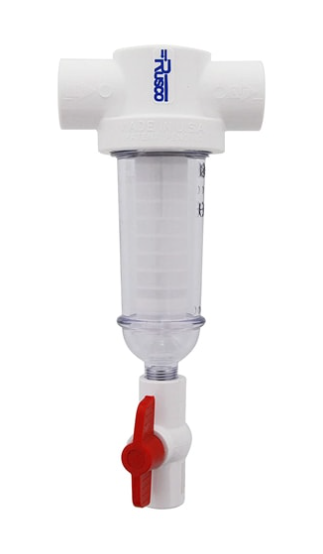
The 100-micron sediment filter is designed to filter out large chunks of sediment in well water. The filtration media is easy to clean and re-use. The flush valve makes maintenance super easy, and a transparent housing keeps you aware of the sediment buildup inside the filter.
The filter provides a 25 GPM flow rate with its 1-inch plumbing connections. Users mention that it works flawlessly and doesn’t let water pressure drop.
Chlorination
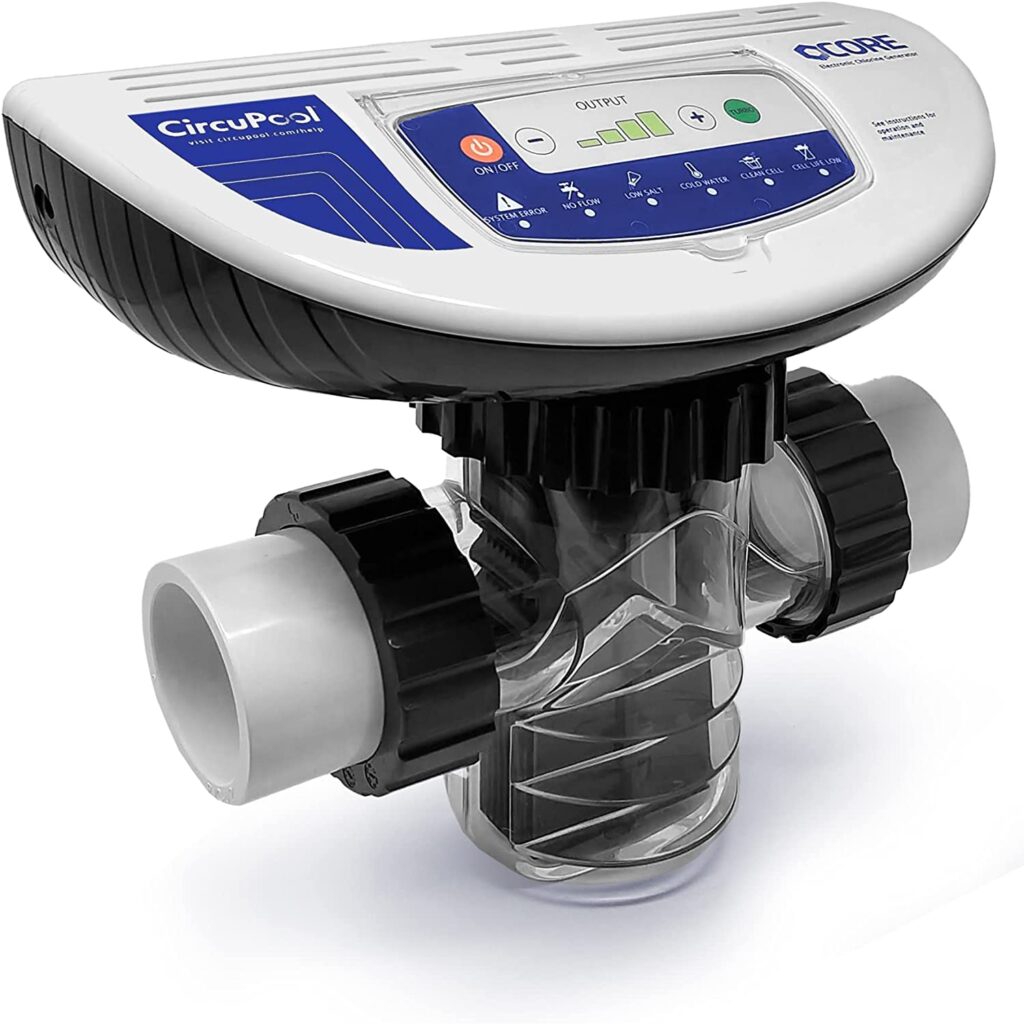
Bacterial contamination also causes turbidity. Bacteria can enter well water through various ways can can be treated via shock chlorination, UV purification or a chlorinator for recurrent bacterial contamination problem.
It is recommended to get your well water tested for bacteria before adopting a treatment method. Shock chlorination often fixes well water bacterial problems for 1-3 years.
Reverse Osmosis
Reverse Osmosis is commonly used to purify drinking water. RO filters have multiple filtration stages like sediment filter, carbon filter, and RO filters. Some RO filters come with UV filtration and remineralization stages for drinking water.
RO filters eliminate turbidity by removing suspended particles, bacteria, TDS, organic and inorganic impurities. The water leaving RO system is 100% pure and free from all contaminants.
Recommended RO System to Remove Turbidity: SpringWell’s Reverse Osmosis Water Filter
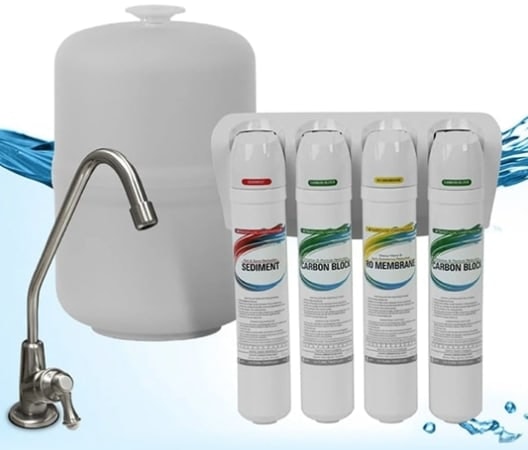
The filter can remove up to 99% of all the contaminants in well or city water. It comes with a sediment filter, two carbon filters, and an RO membrane. The RO membrane is so small that it hardly allows water to pass through, making filtration a slow process.
The filter has a lifetime warranty and a pressurized tank for storing water. The only problem is that RO systems waste 1-3 gallons of water for every gallon they filter.
Some Simple Options to Remove Turbidity from Well Water
You can use following methods to remove turbidity from well water if you dont have access to a water filter.
Cloth Filtration
Cloth filtration is used to remove suspended particles from water but it cannot remove dissolved contaminants or bacteria from water. However, it can remove carriers to which bacteria are attached.
Sand Filtration
Sand filtration is another method to remove turbidity from water. You will need three containers to make this method work. The turbid water is added to a sand and gravel container with a spigot at the bottom. The mixture of sand and gravel effectively removes suspended particles and some bacteria from the water.
The biggest drawback of this method is its slow speed and the requirement of three containers for filtration to work.
Settling and Decanting
It is a simple process but requires up to 24 hours, depending on the quantity of water and the number of suspended particles in the water.
It works by adding turbid water to a transparent container and then waiting for the particles to settle down at the bottom. Once all the particles sit at the bottom, you can pour the clean water at the top to another container ensure that particles at the bottom don’t flow in the container.
How to Remove Turbidity from Drinking Water using Natural Coagulants
You can also remove turbidity from drinking water using natural coagulants. A research paper published on ScienceDirect shows natural coagulants like Moringa Oleifera, Strychnos Potatorum, and Phaseolus Vulgaris can successfully remove turbidity from drinking water better than most of the non-filters method listed above. However, their availability and identification are a big concern while using this. Not everyone can identify these materials.
Moringa Flocculation

MoringaOleifera is the most potent natural coagulant of all coagulants mentioned above.
You can use Moringa seeds to remove turbidity from well water. The Moringa tree pod contains a seed that acts like a natural coagulant agent in crushed form. The process is simple. You need to pick and dry the pods, remove the seed and crush the seeds using a mortar and pestle.
Around 2 grams of crushed seeds are added to 20 liters (5.2) gallons of water, and then water is stirred for 5 minutes. It is then allowed to stand for 24 hours and then decanted to another container slowly and carefully.
The benefit of using Moringa is that it is effective, and the drawbacks are that it is labor-intensive and time-consuming. You will need two containers for this method to work.
What is turbidity?
Turbidity is defined as a measure of clarity in the water. Turbid water looks cloudy or opaque when contained in a glass container.
The image below shows what turbid water looks like and how turbidity impacts the outlook of water.
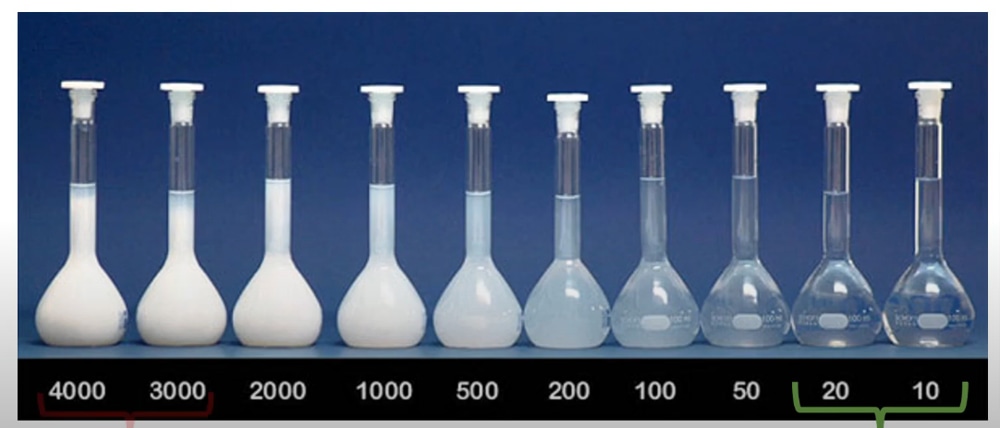
The level of cloudiness or the presence of suspended particles in water is usually measured in NTU. NTU stands for Nephelometric Turbidity Units. You may also see turbidity measured in FTU (Formazin Turbidity Units). Please note that 1 FTU is equal to 1 NTU.
What is the maximum contamination limit (MCL) for turbidity in water?
Environmental Protraction Agency (EPA) sets the MCL for turbidity at 1 FTU or NTU. Anything above this limit should be treated and can be harmful for consumption. We will discuss how to remove turbidity levels in well water later in this article.
How well water becomes turbid?
The common culprits behind turbidity in well water include:
- Clay
- Silt
- Dissolved inorganic and organic elements
- Microorganisms such as bacteria and viruses
What can cause turbidity in water?
- A leaky or malfunctioning septic or sewer system
- Soil erosion
- Algae or weeds
- High iron concentration
- Air bubbles or particles from water treatment plants
- Broken or damaged well cap
- Damaged well casing or damaged well base
What are the health effects of drinking turbid water?
- Cramps
- Stomach disorders
- Nausea
- Headaches
When should I test my well water for turbidity?
You must test your well water every year for turbidity or if you notice that the water coming from the well has become cloudy or opaque.
How to test for turbidity in well water?
The most reliable and accurate way to test turbidity in well water is using a nephelometer, commonly known as a turbidity meter. A turbidity meter utilizes a light and photo detector to measure light scatter and read it out in turbidity units. It can measure turbidity to a high degree of accuracy and produce results accurate up to 1 FTU.
You can also use a water testing strip to test for turbidity.
Let’s see how you can use a turbidity meter to measure turbidity in your well water.
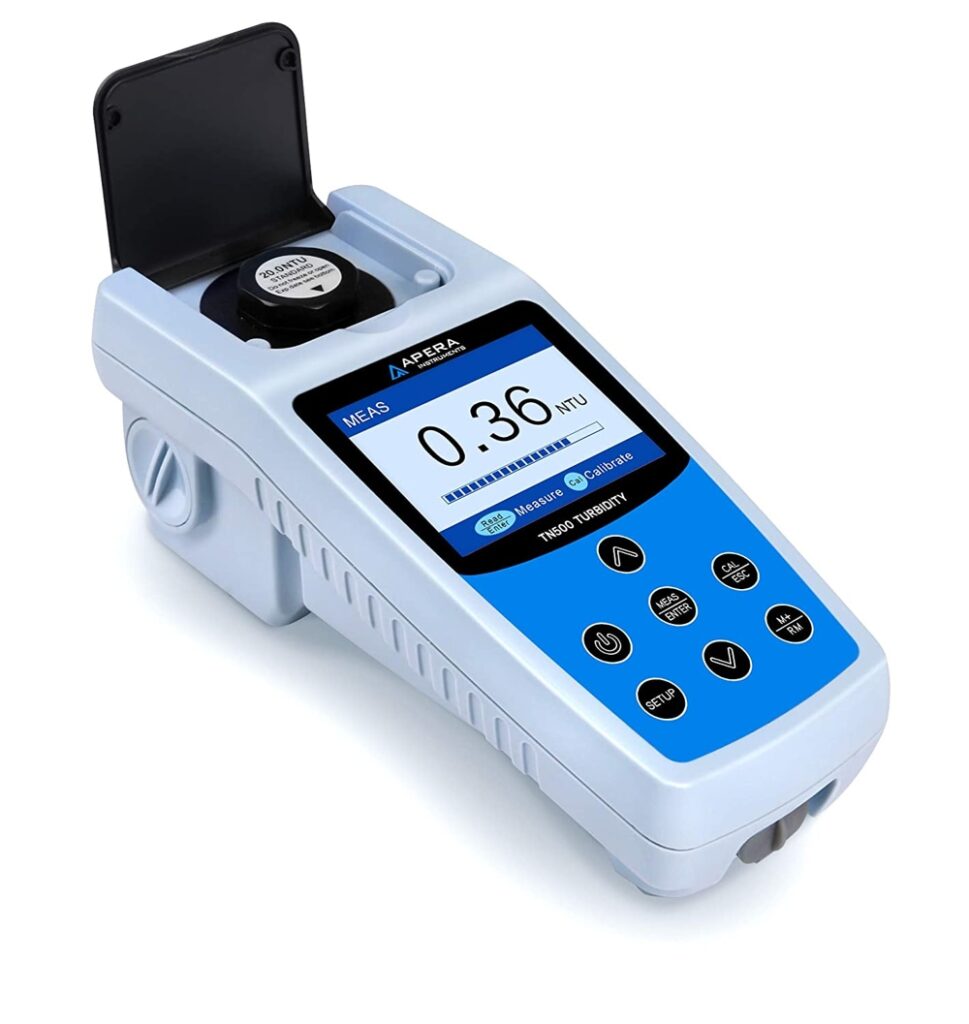
- Take a sample of water in the provided tube or follow the instructions on the packaging on how to take a water sample.
- Make sure you clean the exterior of the tube as you want to measure the turbidity of the water inside the tube and not the fingerprints on the tube. Don’t touch the glass part of the tube after cleaning the tube.
- Place the sample tube in the machine, close the lid and wait for the turbidity rating to appear on display.
- Once you have the reading with you, only then decide and pick the right way of treating turbidity in your well water.
